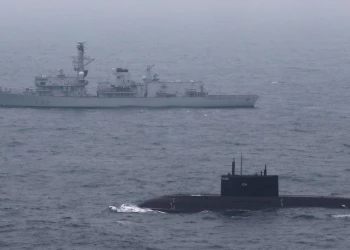The global Unmanned Aerial Vehicle (UAV) market is dominated by North America, with the US being the largest defence spender in the world. Europe is enhancing its UAV industry through regular funding and development programs, and Asia-Pacific, the third-largest market, also offers a potentially attractive investment opportunity for western firms.
UAVs are the next generation of aerial platforms to be deployed by defence ministries around the world. Demand for UAVs is fuelled by the successful deployment of these systems in combat operations in Iraq and Afghanistan. These unmanned platforms are used as force multipliers, performing intelligence, surveillance and reconnaissance (ISR) missions, target recognition, damage assessment and electronic warfare.
Defence ministries around the world are investing in this capability to reduce troop casualties. Mini and VTOL UAVs are also affordable and capable of performing ISR missions, and demand for these cost-effective UAVs is rising in countries with low spending power.
The spread of US forces across the globe acting as global and regional security providers has resulted in a strong demand for Medium-Altitude, Long-Endurance (MALE) UAVs in the North American market. Expenditure on High-Altitude, Long-Endurance (HALE) UAVs is expected to be the second-highest, constituting around 31% of the market. The recent successes of unmanned drones in combat operations in Afghanistan and Iraq, and the multi-role capabilities and advantages that an unmanned combat aircraft could bring to a battlefield are also encouraging the US to spend on unmanned combat air vehicles (UCAVs).
Demand for UAVs in Europe has increased during the last decade as several European nations participated in the wars in Iraq and Afghanistan as part of the International Security Assistance Force (ISAF), and in various peacekeeping operations carried out by the EU, UN and NATO. The successful use of UAVs by the US and Israel in these operations has underlined the importance of UAVs to European nations, who have partnered with the US and Israel in programs such as the Euro Hawk and Harfang to develop local UAV development and manufacturing bases.
Security threats posed by cross-border insurgents, illegal immigrants, pirates, hostile nations and terrorist organizations such as al-Qaeda and Jemaah Islamiah (JI) have created a need for defence systems capable of carrying out surveillance and intelligence gathering missions. UAVs provide enhanced coverage along remote sections of a country’s border, and UAVs equipped with Electro-Optical (EO) sensors can identify images from an altitude of 60,000 feet and provide real-time imagery to a ground control operator, who can then make fast, informed decisions regarding deployment of border patrol agents. UAVs also have a wider range than border security forces on patrol or stationary surveillance equipment, and have a higher probability of tracking illegal immigrants seeking to enter a country through dense woods or mountainous terrain.
Countries across the world are developing UAVs to meet their own defence needs or to export to the global defence market. Capabilities such as relatively low-cost enhanced Intelligence, Surveillance and Reconnaissance (ISR), Electronic Attack (EA), strike missions, Suppression/Destruction of Enemy Air Defence (SEAD/DEAD), network nodes, communications relays and Combat Search and Rescue (CSAR) are driving demand across the world. UAVs have high endurance levels and are capable of carrying more weight during take-off, and modern UAVs such as the ScanEagle are equipped with Synthetic Aperture Radar (SAR) which can pick out objects not readily visible to Infra-Red (IR) or EO cameras.
Laser-powered UAVs are powered by a laser transmitter which converts power from a primary source, such as a battery, generator or AC powerline, into a single-wavelength beam of light. These UAVs are capable of staying airborne for their entire lifecycle as this method of recharging avoids the need to land and refuel, which may also improve the lifecycle and maintenance costs as much of the damage incurred by UAVs occurs while landing.
[inlinead]
About ICD Research
ICD Research is a full-service global market research agency and premium business information brand specialising in industry analysis in a wide set of B2B and B2C markets. ICD Research has access to over 400 in-house analysts and journalists and a global media presence in over 30 professional markets, enabling us to conduct unique and insightful research via our trusted business communities. Through its unique B2B and B2C research panels and access to key industry bodies, ICD Research delivers insightful and actionable analysis. The ICD Research survey capabilities grant readers access to the opinions and strategies of key business decision makers, industry experts and competitors as well as examining their actions surrounding business priorities.





